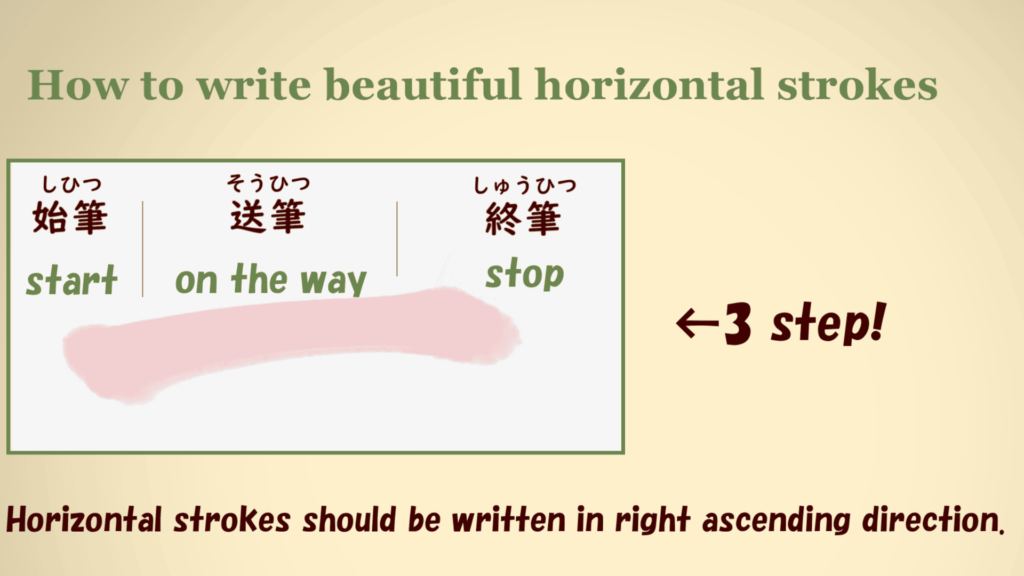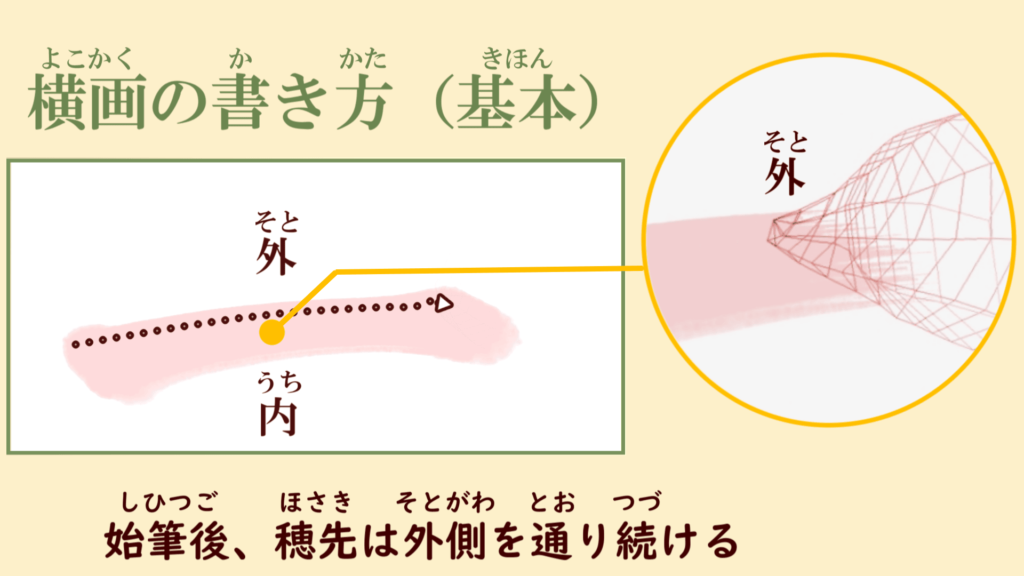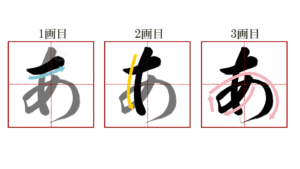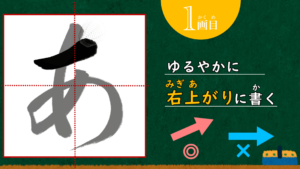How to write horizontal strokes [The most basic skill of calligraphy ]
Hi, I am "Teto".
Japanese calligraphy course that enables anyone to learn to write beautiful Japanese characters!
In this article, I will explain "how to write horizontal strokes with writing brush".
This is the most important basis of calligraphy, so make sure you master it!
This article is the same as the video below, so please refer to that as well!
What do you keep in mind when writing horizontal strokes with writing brush?
t is not limited to horizontal strokes, but dots and lines(stippling) can be divided into three actions.
※ dots and lines(stippling)‥点画(てんかく tenkaku)

Three actions‥start『始筆(しひつ;shihitsu)』、on the way『送筆(そうひつ;souhitsu)』、stop『終筆(しゅうひつ;syuhitsu)』
And the basic rule is that horizontal strokes should be written in a right ascending direction.
Then, what region of the brush should you be conscious of and how should you carry the brush to write a clean stroke?
Start;始筆
When starting writing brush stroke, the brush should be inserted at a 45-degree angle.
If you put a little force into writing brush, a beautiful pattern will be formed.

on the way;送筆
On the way(送筆),please be aware of where brush tip is passing through.
In the first stroke(Start;始筆), the brush is inserted at a 45-degree angle, right?
At that time, the brush tip is facing outward.
Please continue to write with the brush tip facing outward.

Then, the brush should move smoothly without twisting your wrist.
The key is to relax with your shoulders and arms.
Of course, you'll need to learn the sensory details such as the perfect amount of force and indian ink(calligraphy ink;墨), etc.
So it will be difficult to immediately write the same horizontal strokes as an experienced calligrapher.
However, once you understand the movement of brush tip, you will be able to improve quickly.
stop;終筆
In order to stop cleanly at the end of the stroke, it is necessary to proceed well with the start brush stroke and the part on the way.
If you do these correctly, the brush hairs will not be disturbed, and you can easily move on to the stop brush stroke.
The end brush stroke should be stopped at a 45-degree angle, the same as the start brush stroke.

Experienced calligraphers lift the brush slightly (without lifting it completely off the paper at this point) and then stop it again to form the shape.
(There are other ways to stop the brush, such as pushing it back, depending on the case.)
If you have a chance to watch a teacher or a good calligrapher writing, please pay attention and observe.
By the way, the writing style in which the tip of the brush is facing outward is called 露鋒(ろほう;exposed stroke).
As you advance, you will find other writing styles.
However, I think that exposed stroke is a good way to start calligraphy.


